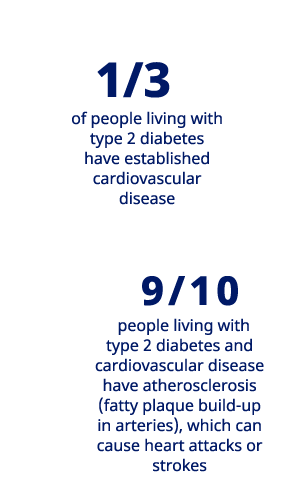
Understanding the mental health impact of COVID-19: Interview with an expert
Right now, billions of people across the world are struggling to comprehend and respond to the far-reaching ramifications of the coronavirus.
Ken shares his story of diabetes and stress and gives tips to keep calm and relaxed.
In periods of uncertainty, healthy habits and good routines are crucial. Make sure to follow your meal plan, stick to your exercise routine (or start a new one), look for pleasure in indoor activities, connect with others virtually and put yourself in the best physical and mental shape possible.
On this page, you will find links to third-party material, related to diabetes and coronavirus, not owned, or controlled by Diabetes What’s Next. We are not responsible for the content, or the accuracy of the information provided and have no control over the privacy policies or terms of use of such third-party sites.
When you are working or spending a lot of time at home, the fridge might seem closer than ever. This can make it difficult to keep to your regular snack schedule.
Consider getting creative and invent some new snacks yourself; remember that there are very few carbs in meat, fish, seafood, eggs, cheeses, yoghurt, asparagus, spinach, broccoli, mushrooms, bell peppers and avocado.
When preparing snacks, try to include these ingredients:
Meat, fish, seafood, eggs, cheeses and yoghurt
Asparagus, spinach,
broccoli, mushrooms,
bell peppers and avocado
Being forced to stay inside with a limited social calendar can cause your mind to act in unexpected ways. Add to that an undoubtedly very serious pandemic like COVID-19, and it is not surprising if you feel anxious.
The problem with anxiety is that it can distort your thinking and affect your behaviour in ways that may, in the long run, prevent you from living the best life you could be living.
Breathing exercises are a highly effective way to improve your mental health and minimise anxiety. Aside from helping you become more mindful in general, these easy-to-learn exercises come with several benefits:
They help you relax and focus more.
They are proven to (help you) reduce your stress levels.
They increase your control of emotions.
They can help you sleep better at night.
People with type 2 diabetes are 2-4 times more likely to have a heart attack or stroke compared to someone living without diabetes.
Learn how you can reduce the risk.
Exercise can make it easier to manage stress and other symptoms of diabetes.
Regular exercise can increase insulin sensitivity, which means that your blood sugar is allowed to enter your muscle cells and provide you with energy instead of causing hyperglycaemia – aka spiking blood sugar levels.
Exercise also increases the ability of your muscles to store and use sugar for energy, even without insulin, which has a stabilising effect on your blood sugar levels.
Scientists have found that weight training can lead to better blood sugar control and lower the risk of complications for people with diabetes. This is because weight training builds muscle mass, making it much easier to achieve steady blood sugar levels.
Start out with a few simple stretching exercises. Exercise your joints and muscles for 5 minutes in the morning and 10 in the evening.
Why not look for good videos that match your fitness? Many fitness centres have such videos available online.
Try to do 3 sessions per week and remember to schedule a rest day between workouts.
Stay hydrated and pay attention to your blood sugar levels before, during and after physical activity.
Try to get your pulse up too. Doing steps – up and down stairs or on a stepper – is a great way to manage diabetes in the privacy of your home.
HQ22DI00083



